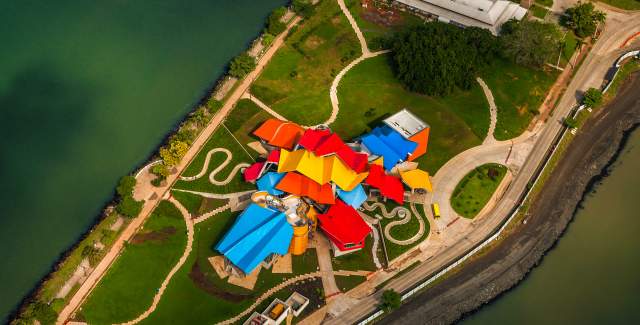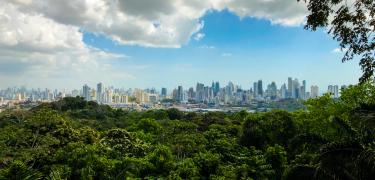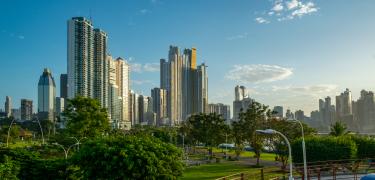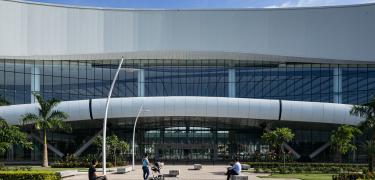Biomuseo
Geologically speaking, the isthmus of Panamá formed only recently, but its appearance literally changed the world. As a huge ocean split in two, changing currents and climates, two large continents merged. The result was an unprecedented exchange of flora and fauna.

To learn more about Panamá's unique impact on the planet’s biodiversity and the country’s commitment to protecting the environment, visit the Biomuseo. Famed architect Frank Gehry, the mastermind behind some of the world’s most iconic buildings, such as the Guggenheim Museum in Bilbao and the Louis Vuitton Foundation in Paris, designed the striking, colorful building. The Biomuseo is Gehry’s first project in Latin America.
There are 8 galleries in the space: “Biodiversity Showcase;” “Panamarama,” a three-level projection space of Panamá’s ecosystems; “Building The Bridge” which explains how Panamá was formed; “Worlds Collide,” an exhibit on the animals that migrated through the region; “The Human Path,” where you can learn about the human history of the area; “Oceans Divided,” an aquarium; “The Living Web,” a 15 meter (50 foot) sculpture, and finally, “Panamá is the Museum” an interactive view of the relationship between Panamá’s cultural and ecological diversity.
After you visit the permanent and temporary indoor interactive exhibits, venture outdoors and explore Biodiversity Park. It surrounds the museum and includes green spaces such as the Lawn of Microdiversity, the Garden of Evolution, and the Crops Garden. From there, you can even see ships passing through the Canal and under the Bridge of the Americas.

Getting There
The Biomuseo is located on the Amador Causeway, just a few minutes from downtown Panama City. It can be reached by car. To get there via public transportation, take route C850, which starts at the Albrook Line 1 metro station and goes to Amador Causeway and back.






